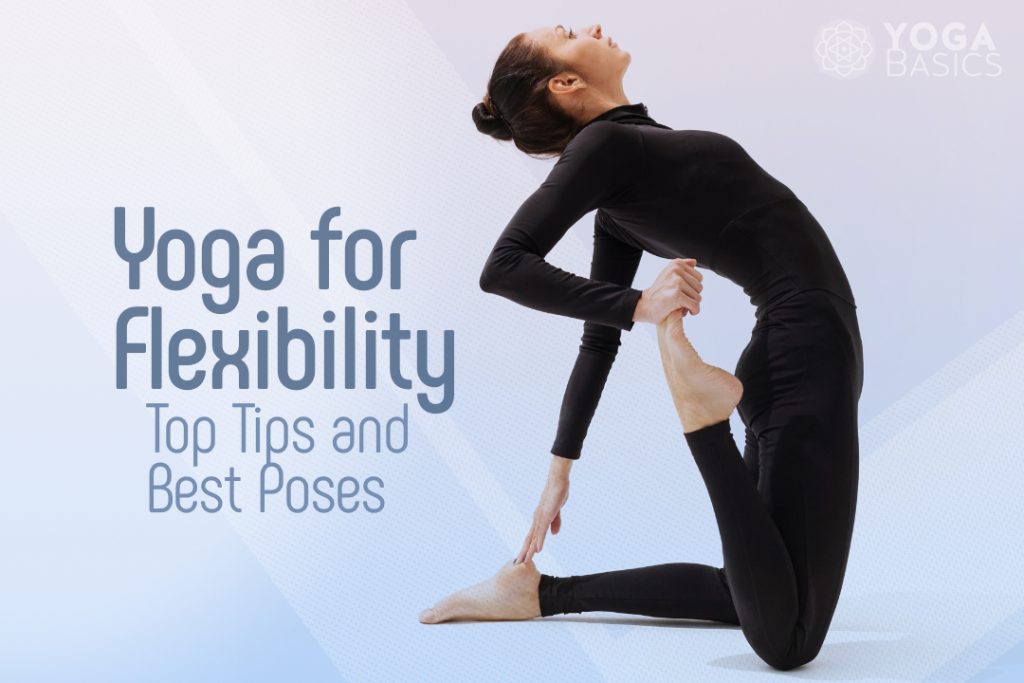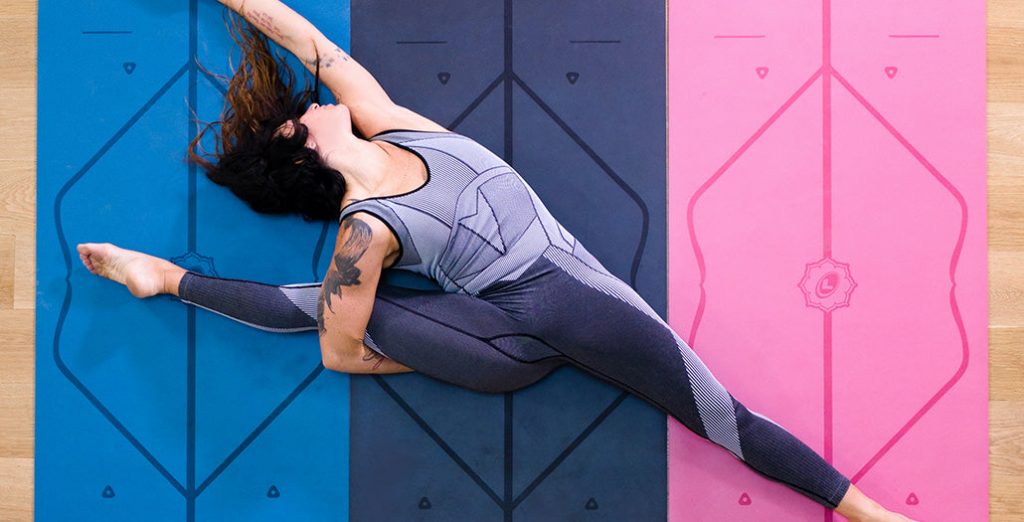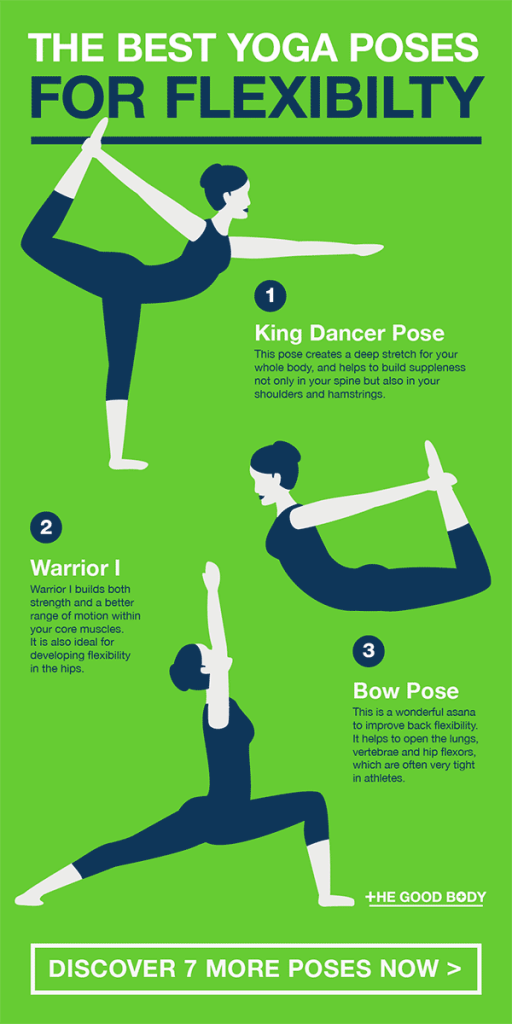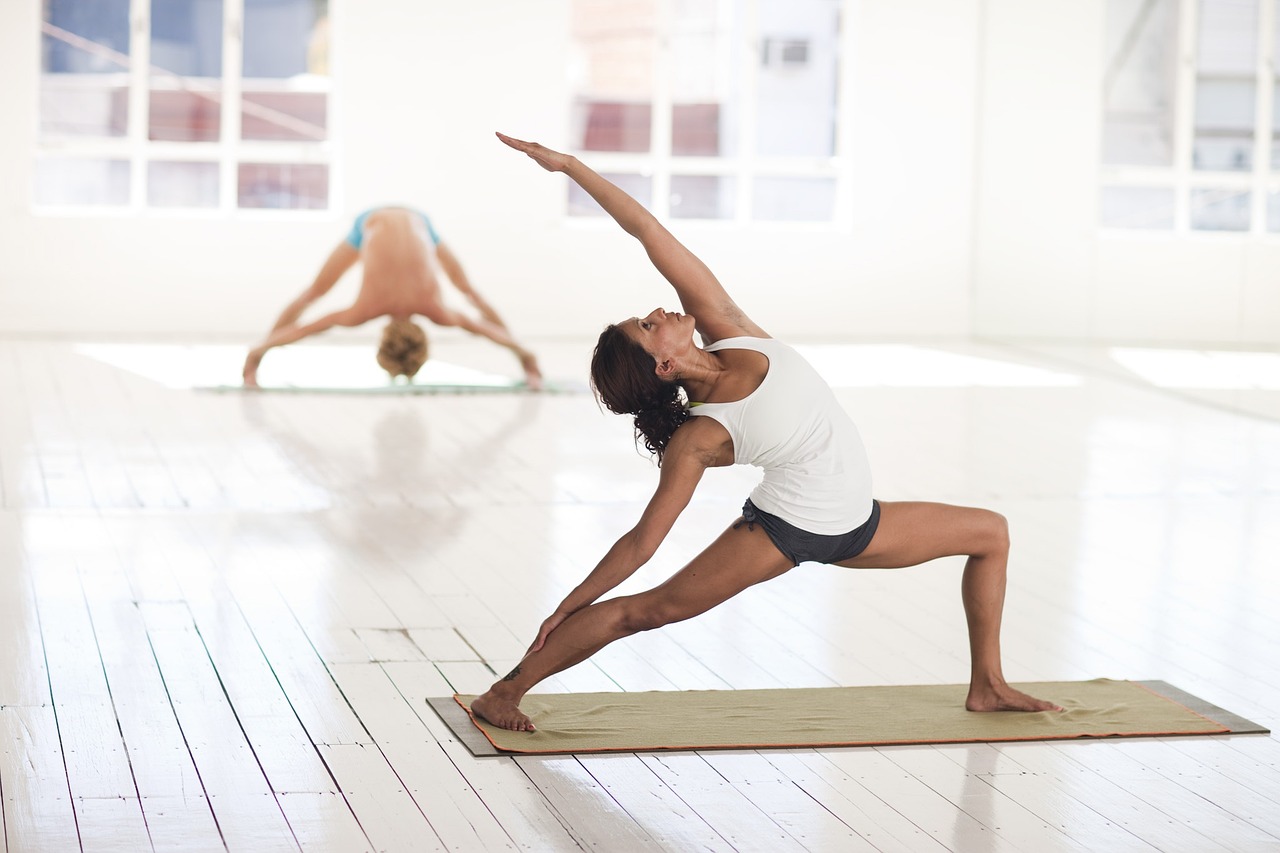If you’re looking to increase your flexibility and improve your range of motion, yoga might just be the answer you’ve been seeking. With a variety of stretches and poses specifically designed to target different areas of the body, yoga can help you become more limber and agile. Whether you’re a beginner or have been practicing for years, there are plenty of options to suit your needs and level of experience. So, why not give it a try and start unlocking your body’s full potential?

This image is property of www.spotebi.com.
Understanding Flexibility
Flexibility is a key component of overall physical fitness and plays a vital role in maintaining a healthy body. In the context of yoga, flexibility refers to the ability of the muscles and joints to move through a full range of motion without any discomfort or restrictions. It is not just about being able to touch your toes or perform complex poses, but rather about cultivating a sense of fluidity and ease in your body.
What is Flexibility?
Flexibility can be defined as the capacity of your muscles and joints to stretch, lengthen, and move freely. When you have good flexibility, it means that your muscles are warm, supple, and elastic, allowing them to lengthen and contract without any resistance. This allows you to move your body in various directions and positions without feeling tight or restricted.

This image is property of i0.wp.com.
Why is Flexibility Important in Yoga?
Flexibility is crucial in yoga because it enables you to perform the various poses with ease and grace. Without adequate flexibility, you may struggle to achieve proper alignment, which can lead to injury or discomfort. Additionally, having good flexibility allows you to deepen your practice and explore more advanced poses as you progress on your yoga journey.
Furthermore, flexibility in yoga is not limited to just physical movements. It also extends to the mind and the ability to adapt and flow through different situations and challenges both on and off the mat. Flexibility in your mindset can help you find peace and acceptance in the present moment, allowing you to let go of any resistance or rigidity.
Types of Flexibility
There are several types of flexibility that are important to understand in the context of yoga:
-
Static Flexibility: This refers to your ability to hold a stretch or pose for an extended period of time without feeling discomfort. Static flexibility is often developed through passive stretching techniques where you hold a particular stretch for a period of time.
-
Dynamic Flexibility: Dynamic flexibility is the ability to move your body through a full range of motion with control and ease. This type of flexibility is developed through active movements such as flowing sequences or dynamic stretches.
-
Active Flexibility: Active flexibility is the ability to use your muscles to actively move your body through a range of motion without relying on external forces. It involves muscular strength, control, and coordination.
-
Passive Flexibility: Passive flexibility is the ability of a muscle to be passively stretched, often with the help of gravity or an external force. This type of flexibility is typically developed through practices such as yin yoga or assisted stretching.
By understanding these different types of flexibility, you can tailor your yoga practice to target specific areas and enhance your overall range of motion.

This image is property of i0.wp.com.
Benefits of Yoga for Flexibility
Yoga is renowned for its ability to improve flexibility and increase overall range of motion. By incorporating regular yoga practice into your routine, you can experience numerous benefits:
Increased Range of Motion
Yoga helps to lengthen your muscles and improve joint mobility, which in turn increases your range of motion. This means that you will be able to move more freely and with greater ease in your daily activities. As the flexibility of your muscles and connective tissues improves, you may find that you are able to stretch further and hold poses for longer durations.
Improved Posture
As you gain flexibility through yoga, you will notice improved posture and alignment. Lengthening tight muscles in the hips, back, and shoulders can help counteract the negative effects of prolonged sitting and poor posture. With regular practice, you may find that you naturally stand taller and feel more balanced in your body.
Reduced Risk of Injury
Having flexible muscles and joints can significantly reduce the risk of injury, both in your yoga practice and in everyday life. When your body is more flexible, it is better equipped to handle sudden movements or unexpected challenges. Additionally, increased range of motion can help prevent muscle imbalances and joint dysfunction that can lead to chronic pain or injuries.
Relief from Muscle Tension
Yoga incorporates various stretching and relaxation techniques that can help release muscle tension and tightness. Through deep breathing and mindful movement, you can bring awareness to areas of tension in your body and gently release any holding patterns. This can promote a sense of relaxation and ease, both physically and mentally.
Yoga Stretches for Flexibility
To improve flexibility in your yoga practice, incorporating specific stretches can be highly beneficial. Here are some key yoga stretches that target different areas of the body:
Forward Fold (Uttanasana)
Forward folds are excellent for stretching the hamstrings, calves, and lower back. Stand with your feet hip-width apart, bend forward from the hips, and allow your upper body to hang down. Keep a slight bend in the knees if necessary, and let gravity pull you deeper into the stretch.
Standing Forward Bend (Uttanasana)
Similar to the forward fold, this pose stretches the back of the legs and spine. Start in a standing position, then hinge forward from the hips, keeping the spine long. Allow your hands to rest on the floor or grab onto your shins or ankles. Relax your head and neck, and breathe deeply as you hold the pose.
Bridge Pose (Setu Bandhasana)
Bridge pose is great for stretching the chest, shoulders, and hip flexors while strengthening the glutes and hamstrings. Lie on your back with your knees bent and feet flat on the floor. Press your feet down, lift your hips off the mat, and interlace your hands underneath your body. Hold the pose for several breaths, focusing on opening the front of your body.
Extended Triangle Pose (Utthita Trikonasana)
Extended triangle pose stretches the hamstrings, hips, and side body. From a standing position, step your feet wide apart. Turn your right foot out 90 degrees and extend your arms to the sides. Reach your right hand down to your shin, ankle, or the floor and extend your left arm up toward the ceiling. Keep both legs straight and engage your core as you hold the pose. Repeat on the other side.
Seated Forward Bend (Paschimottanasana)
This seated pose targets the hamstrings, lower back, and upper back. Sit on the floor with your legs extended in front of you. Fold forward from the hips, reaching for your feet or ankles. Keep your spine long and relax into the stretch. You can also use a strap or towel around the feet if you need assistance.

This image is property of cdn.shopify.com.
Yoga Poses for Flexibility
In addition to stretches, incorporating specific yoga poses into your practice can further enhance flexibility. Here are some yoga poses that can help improve your overall range of motion:
Downward Facing Dog (Adho Mukha Svanasana)
Downward facing dog is a full-body stretch that targets the hamstrings, calves, shoulders, and upper back. Start on your hands and knees, then lift your hips up and back to create an inverted V shape. Press your hands into the mat, lengthen your spine, and engage your core. Pedal your feet to stretch the calves and hamstrings.
Cobra Pose (Bhujangasana)
Cobra pose helps to open the chest, stretch the abdominals, and strengthen the back muscles. Lie on your stomach with your hands flat on the mat under your shoulders. Press into your hands, lift your chest off the mat, and draw your shoulder blades together. Keep your gaze forward and breathe deeply into the stretch.
Extended Puppy Pose (Uttana Shishosana)
Extended puppy pose is a gentle stretch for the shoulders, upper back, and chest. Start on all fours, then walk your hands forward as you lower your chest toward the mat. Keep your hips over your knees and your forehead resting on the mat or a block. Relax into the stretch, feeling a gentle opening across your upper body.
Half Lord of the Fishes Pose (Ardha Matsyendrasana)
This seated twist is excellent for increasing flexibility in the spine and hips. Start in a seated position with your legs extended in front of you. Bend your right knee and cross your right foot over your left leg, placing it on the floor. Wrap your left arm around your right knee and twist your torso to the right, placing your right hand on the floor behind you. Hold the pose and then repeat on the other side.
Pigeon Pose (Eka Pada Rajakapotasana)
Pigeon pose deeply stretches the hips, glutes, and lower back. Start in a push-up position, bring your right knee forward and place it behind your right wrist. Extend your left leg behind you and square your hips. Lower your torso down and rest your forehead on the mat or a block. Hold the pose and then switch sides.
Tips for Improving Flexibility in Yoga
While incorporating stretches and poses into your yoga practice can enhance flexibility, there are additional strategies you can implement to further improve your range of motion:
Practice Regularly
Consistency is key when it comes to improving flexibility. Make it a habit to practice yoga regularly, even if it’s just for a few minutes each day. By dedicating time to your practice, you will gradually increase your flexibility over time.
Warm Up Before Yoga
Before diving into your yoga practice, it’s important to warm up your body to prevent injury and promote flexibility. Incorporate gentle movements such as neck rolls, shoulder rolls, and gentle twists to awaken your muscles and prepare them for deeper stretches.
Use Props as Assistance
Props such as blocks, straps, or bolsters can be extremely helpful in assisting with poses and stretches. They can provide support and stability, allowing you to access a deeper stretch without straining your muscles. Don’t hesitate to use props as needed to enhance your practice.
Focus on Breath and Relaxation
Deep, mindful breathing is a fundamental aspect of yoga. When stretching and holding poses, focus on your breath and consciously relax any areas of tension. By combining breathwork with your stretches, you can enhance the effectiveness of the stretch and promote relaxation in your mind and body.
Listen to Your Body
Flexibility is a personal journey, and it’s important to listen to your body and honor its limitations. Avoid pushing yourself too hard or forcing your body into uncomfortable positions. Instead, approach your practice with patience, compassion, and a gentle curiosity. Accept where you are in your flexibility journey, and trust that progress will come with time and consistent practice.

This image is property of www.thegoodbody.com.
Precautions and Considerations
While yoga can be a beneficial practice for improving flexibility, it’s essential to approach it with caution and take certain precautions:
Avoid Overstretching
Pushing your body beyond its limits can result in injury or strain. Avoid overstretching and respect your body’s boundaries. Gradually increase the intensity of your stretches over time and listen to the feedback your body provides.
Consult with a Yoga Instructor
If you are new to yoga or have any underlying medical conditions or injuries, it is advisable to consult with a qualified yoga instructor. They can provide guidance on proper alignment, modifications, and sequences that are suitable for your individual needs.
Modifications for Injuries or Conditions
If you have specific injuries or physical conditions, it’s important to modify poses as needed to avoid exacerbating any existing issues. A knowledgeable yoga instructor can assist you in finding appropriate modifications and alternative poses that work best for your body.
Be Patient with Progress
Improving flexibility takes time and consistency. While you may not see immediate results, trust in the process and be patient with your progress. Celebrate even the smallest improvements and remember that every yoga practice is an opportunity for growth, both physically and mentally.
Stay Hydrated
Hydration plays a crucial role in maintaining healthy muscles and joints. Drink plenty of water before, during, and after your yoga practice to ensure that your body remains adequately hydrated. This can help prevent muscle cramps, stiffness, and improve overall flexibility.
Conclusion
Incorporating yoga into your routine can be a transformative experience, both in terms of physical flexibility and personal growth. By regularly practicing yoga stretches and poses, you can increase your range of motion, improve posture, reduce the risk of injury, and find relief from muscle tension. Remember to approach your practice with patience, listen to your body, and embrace a beginner’s mindset for lasting results. So why wait? Embrace the journey of flexibility through yoga and unlock your full potential for happiness and harmony within yourself and with others.


